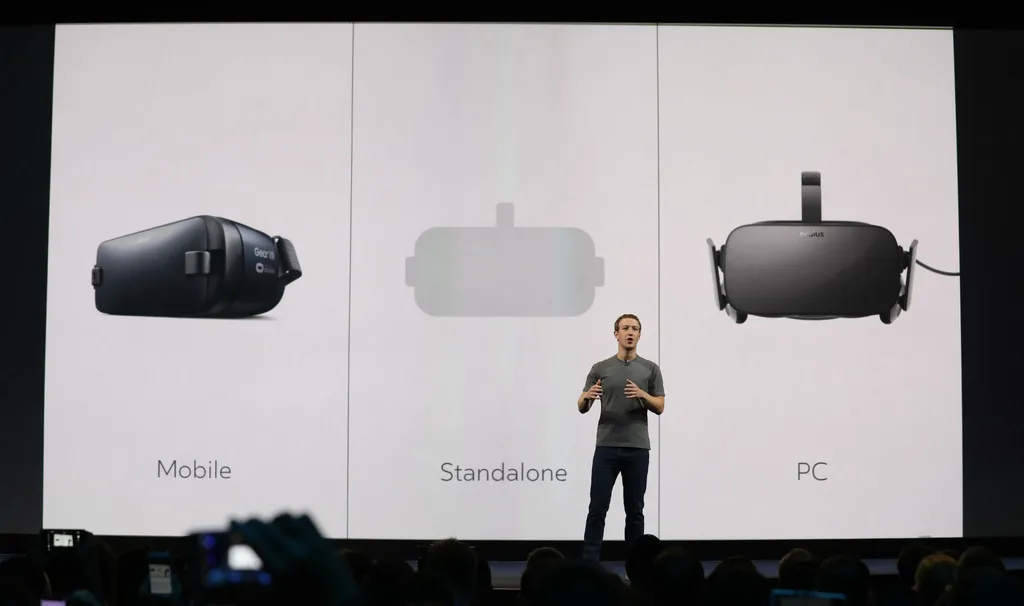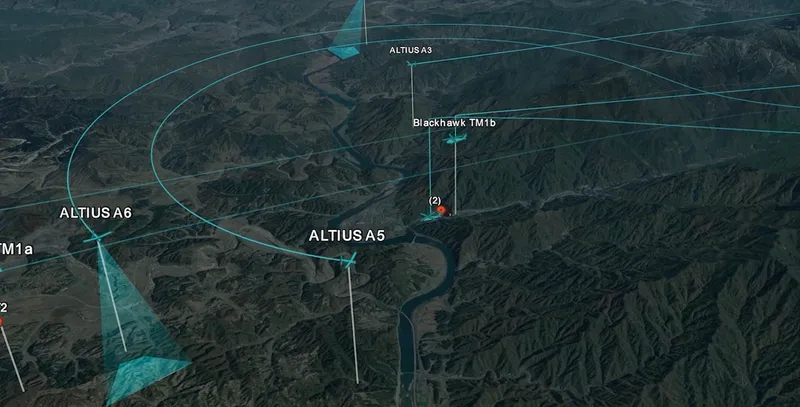Facebook CEO Mark Zuckerberg showed the future of his company on stage at Oculus Connect this week.
He effortlessly placed a video call from a virtual reality headset, using Facebook Messenger to connect with his wife’s phone. She answered the call at work. On her phone’s screen, Priscilla Chan saw an animated avatar of Zuckerberg — as if a cartoon with her husband’s voice had called her. In VR, Zuckerberg felt like he was holding a phone. It displayed video streaming live from his wife’s phone in the real world.
Zuckerberg’s demonstration seemed like fiction, but it was fact.
He showed a path to VR headsets which are communication devices as integral to our lives as the phones we carry around with us.
VR will be a TV. Without a remote control.
VR will be a PC. Without a mouse or keyboard.
VR will even be a phone. Without cellular connectivity.
And it’ll be a lot more too.
[gfycat data_id=”ImpassionedDetailedDuiker”]
During the same presentation Zuckerberg also announced a standalone prototype of an Oculus headset that would combine the best parts of the mobile Gear VR and PC-based Rift. While those headsets are selling today, the standalone “Santa Cruz” prototype we tried a few minutes after it was announced represents the next stage of the journey toward mainstream VR.
As Facebook works toward a standalone mobile VR headset, the company will leave behind the baggage of existing PC (Windows) and mobile (Android) operating systems. In its place Facebook will offer an integrated hardware and software system focused entirely on delivering a high quality VR experience that doesn’t disconnect you from the real world. In fact, it may even connect you more frequently with friends.
“We did buy into standalone as an important direction for us,” said Oculus CTO Carmack in his keynote at the conference. “The productization work that’s being done now is by the core vision team.”
Microphones are already standard features on every Oculus VR headset. When combined with Internet connectivity, in the vision Zuckerberg outlined you will very likely have the chance to invite anyone and everyone in the world to join you on your virtual journeys, whether they call you on a virtual phone, look over your shoulder from a window in the real world, or stand next to you in VR playing a game of cards.
“PC is how can we make the best possible experience and push hand presence and other things like that forward. Mobile is how can we be at the right price point, get to the largest audience, start to see how people react to 360 videos and movies and all these other things that we’re putting there,” said Oculus content head Jason Rubin. “Standalone is yet another eventual step in that direction, although [Santa Cruz] is a feature prototype, not actually a product we’ve announced today. But it all leads to glasses.”
[gfycat data_id=”LeftAggravatingAnnashummingbird”]
According to Facebook, the company spent $250 million so far paying people to make content for VR, and Zuckerberg promised to spend as least as much going forward as they push for great VR software. With Oculus Touch arriving in December and room scale officially supported when you have three cameras positioned around the room, Facebook’s transformation into a consumer electronics company is only beginning.
“Building great software experiences is going to be the key to unlocking the next phase of virtual reality, and going towards this ultimate goal,” Zuckerberg said. “We’re gonna build a software platform that puts people first, we’re going to invest hundreds of millions of dollars into all kinds of different content for you to build…and we’re gonna continue making progress on computer vision until we can unlock this completely new category of virtual reality product.”
The bottom line is that Facebook painted a very public and surprisingly clear picture of its next phase. They will give developers hundreds of millions of dollars to build great VR experiences while creating an entirely new standalone VR platform that builds on the best of everything that’s come before it, while leaving behind the parts that aren’t needed.
“Nothing is going to slow down internally,” Rubin said. “Internally it is exploding in a million different directions.”




























